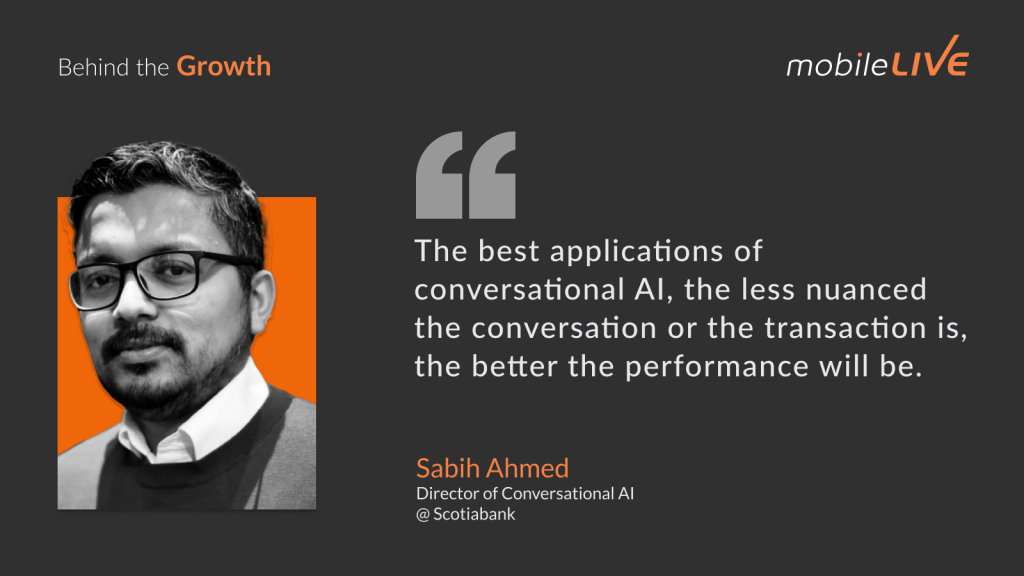Key Insights
Strategic Deployment of Conversational AI
Sabih Ahmed emphasizes the strategic importance of deploying conversational AI in business settings. He outlines that successful conversational AI should target operations characterized by high volume and low complexity to maximize efficiency and reduce costs. Sabih stresses that for conversational AI to be beneficial, it must not only serve business objectives but also enhance customer value. He advises that AI projects should begin with a clear understanding of achievable outcomes and match the business’s operational needs, ensuring technology is utilized where it can make the most significant impact.
Securing Executive Buy-In for AI Projects
A crucial step in implementing AI, as discussed by Sabih Ahmed, is securing executive buy-in. He highlights the necessity of presenting a compelling business case that outlines clear commercial outcomes and benefits. Sabih notes the effectiveness of piloting AI technologies within controlled environments to demonstrate potential before wider deployment. This approach helps mitigate risks and showcases the AI’s capabilities, making it easier to obtain support from top management, which is often cautious about new technology investments.
Importance of Testing and Incremental Development
Sabih Ahmed discusses the importance of rigorous testing and incremental development in the deployment of conversational AI. He points out that thorough testing is essential to identify and rectify issues before full-scale implementation. This process prevents many of the common pitfalls associated with conversational AI, such as misunderstandings or incorrect responses that can damage customer experiences. Sabih advocates for a continuous development approach, where conversational AI systems are regularly updated and improved based on ongoing feedback and performance metrics, ensuring they remain effective and relevant.

Episode Highlights
The Definition and Impact of Conversational AI
Sabih Ahmed defines conversational AI as a subset of artificial intelligence designed to communicate with humans in a natural, engaging manner. This technology sets itself apart by facilitating human-like interactions, making it a vital tool for businesses seeking to enhance customer communication. The discussion emphasizes the unique capability of conversational AI to understand and respond in ways that are comprehensible to humans, thereby improving user experience.
“[Conversational AI] is a subset or the subfield of artificial intelligence, where we teach machines to talk to humans in a human-like way.”
Criteria for Effective Conversational AI Applications
During the episode, Sabih outlines the ideal use cases for conversational AI within a business context, stressing the importance of choosing applications that are low in complexity but high in volume and repeatability. This focus ensures the technology is utilized where it can be most effective, minimizing nuances and enhancing performance in routine tasks.
“The best applications of conversational AI […] the less nuanced the conversation or the transaction is, the better the performance will be.”
Building a Business Case for Conversational AI
Sabih discusses the importance of developing a solid business case for conversational AI, which includes understanding and articulating the expected business outcomes. He categorizes the benefits into cost savings, operational efficiency, and conversion enhancements, highlighting how these factors contribute to a strong foundation for gaining project approval and support.
“Conversational AI business cases are […] around three types: cost savings or operational efficiency play, automation and time saved, and conversions.”
Securing Executive Buy-In for AI Initiatives
The conversation shifts to strategies for securing executive buy-in for AI projects. Sabih recommends demonstrating the technology’s benefits through quantification and pilot projects, which can help alleviate executive concerns by showing tangible results before full deployment. This approach is crucial for advancing AI initiatives beyond the proposal stage.
“What has worked […] is how you go about doing the quantification of the benefits as well as […] getting them excited about the prospects of the technology.”







